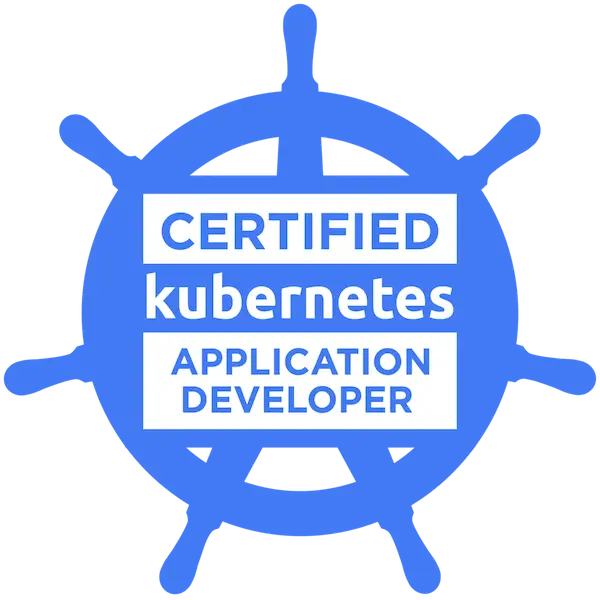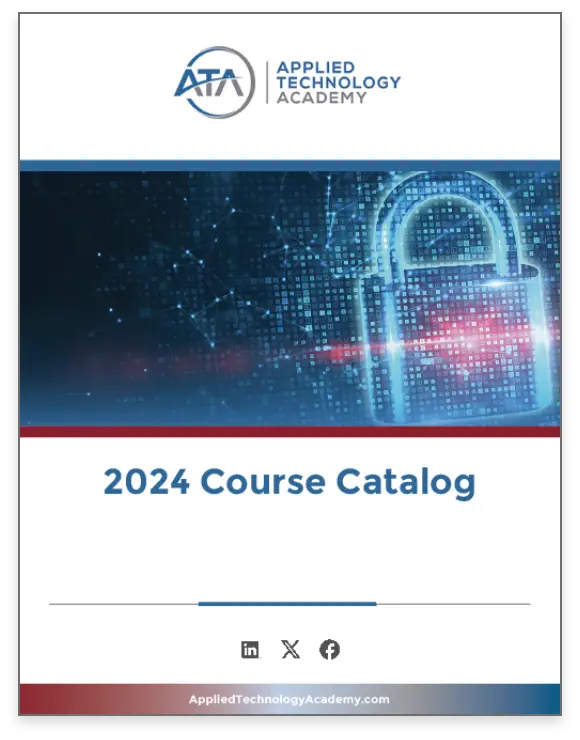
Certified Kubernetes Application Developer
This class prepares students for the Certified Kubernetes Application Developer (CKAD) exam. Kubernetes is a Cloud Orchestration Platform providing reliability, replication, and stability while maximizing resource utilization for applications and services. By the conclusion of this hands-on training, you will go back to work with all necessary commands and practical skills to empower your team to succeed, as well as gain knowledge of important concepts like Kubernetes architecture and container orchestration.
Training at a glance
Level
Beginner
Duration
5 Days
Experience
1 year: Linux
Average Salary
$120,000
Labs
Yes
Level
Beginner
Duration
5 Days
Experience
1 year: Linux
Average Salary
$120,000
Labs
Yes
Training Details
We prioritize covering all objectives and concepts necessary for passing the Certified Kubernetes Application Developer (CKAD) exam. You will command and configure a high availability Kubernetes environment (and later, build your own) capable of demonstrating all “K8s’’ features discussed and demonstrated in this course. Your week of intensive, hands-on training will conclude with a mock CKAD exam that matches the real thing.
All topics required by the CKAD exam, including:
- Deploy applications to a Kubernetes cluster
- Use Kubernetes primitives to implement common deployment strategies (e.g. blue/green or canary)
- Define, build and modify container images
- Implement probes and health checks
- Understand multi-container Pod design patterns (e.g. sidecar, init, and others)
- Understand ConfigMaps
- Create & consume Secrets
- Troubleshooting and debugging tools
- Provide and troubleshoot access to applications via services
- Use Ingress rules to expose applications
- Kubernetes Architecture
- Define, build, and modify container images
- Pods and the Control Plane
- Deploy Kubernetes using Ansible
Lesson 2: Cluster Basics
- Namespaces and Fundamental Kubectl Commands
- Isolating Resources with Kubernetes Namespaces
- Contexts
- Cluster Access with Kubernetes Context
- Kubectl get and sorting
- Listing Resources with kubectl get
- Examining Resources with kubectl describe
Lesson 3: Pod Basics
- YAML and how to read it
- Manifests for Pods
- Create and Configure Basic Pods
- API Versioning and Deprecations
Lesson 4: Container Health, Security, and Observability
- Kubectl port-forward
- Debugging via kubectl port-forward
- Imperative vs. Declarative Resource Creation
- Kubectl exec and cp
- Performing Commands inside a Pod
- Readiness and Liveness Probes
- Implement Probes and Health Checks
- Security Contexts for Pods
- Understanding Security Contexts
Lesson 5: Resource Management
- Limits, Requests, and Namespace ResourceQuotas
- Understanding and Defining Resource Requirements, Limits, and Quotas
- Kubectl Top and Application Monitoring
- Admission Controller
- Create a LimitRange AdmissionController
Lesson 6: RBAC
- LEC: Role Based Access Control
- LAB-S1: Role Based Access Control
- LAB-S2: RBAC Distributing Access
Lesson 7: Logging
- Logging with kubectl log
- Advanced Logging Techniques
- Advanced Logging Techniques
Lesson 8: Ephemeral Storage
- Creating Ephemeral Storage For Fluentd Logging Sidecar
- Best Practices for Container Customization
- ConfigMaps and Volume Mounting
- Persistent Configuration with ConfigMaps
- Secrets
- Create and Consume Secrets
Lesson 9: Persistent Storage
- Persistent Volumes, Claims, and StorageClasses
- Using PersistentVolumeClaims for Storage
- Stateful Containers for Testing
- Persistent Storage with NFS
Lesson 10: Multi-Container Pod Design
- Multi-Container Pods
- Understand the Sidecar Multi-Container Pod Design Pattern
- Init Containers
- Understand the Init Container Multi-Container Pod Design Pattern
Lesson 11: Deployments
- Labels
- Understanding Labels and Selectors
- Annotations
- Insert an Annotation
- ReplicaSets
- Create and Configure a ReplicaSet
- DaemonSets
- Deployments- Purpose and Advantages
- Writing a Deployment Manifest
- Deployments- Version Control
- Performing Rolling Updates and Rollbacks with Deployments
- Blue/Green and Canary Deployment Strategies
- Advanced Deployment Strategies
- Deployments- Horizontal Scaling
- Horizontal Scaling with kubectl scale
- Horizontal Pod Autoscaling
- Kubectl patch
- Patching Deployments and Nodes
Lesson 12: Jobs and CronJobs
- Jobs and CronJobs
- Understand Jobs and CronJobs
Lesson 13: Affinity and Anti-Affinity
- Taints, Tolerations, and Pod Affinity
- Tainted Nodes and Tolerations
Lesson 14: NetworkPolicy
- NetworkPolicy
- Deploy a NetworkPolicy
Lesson 15: Services and Ingress
- Services- LoadBalancer, NodePort, and ClusterIP
- Provide and troubleshoot access to applications via services
- Networking Plugins
- Ingress Controllers
- Use Ingress Rules to Expose Applications
Lesson 16: DNS
- LEC: Hostnames and FQDNs
- Hostnames and FQDNs
Lesson 17: The Helm Package Manager
- Helm
- Using the Helm Package Manager to Deploy Existing Packages
- CHALLENGE LAB: Setting up a single tier service mesh
- A Completed Project
Lesson 18: Extending Kubernetes
- Custom Resource Definitions
- Custom Resource Definitions (CRDs)
Lesson 19: Troubleshooting
- Troubleshooting
Lesson 20: CKAD
- Tips to Pass your CKAD Exam
- CKAD Practice Drill
- CKAD Exam Bookmarks
Lesson 21: Bonus Labs
- Calicoctl
- Deploy a Kubernetes Cluster using Kubeadm
- Create ServiceAccounts for use with the Kubernetes Dashboard
- Sourcing Secrets from HashiCorp Vault
- VNC Desktop
- Saving Your Progress With GitHub
- Create a Cluster Docker Registry
- Advanced Kubernetes Challenge – Build an Application
- Comfortable with an OCI-compliant container runtime, such as Docker or rkt
- Cloud native application concepts and architectures
- Fluent in a programming language
- Basic Linux skills are helpful
- Familiarity with a text editor like vi, vim, or nano is helpful
Upcoming Classes
We Offer More Than Just Alta3 Research Trainings
Our successful training results keep our corporate and military clients returning. That’s because we provide everything you need to succeed. This is true for all of our courses.
Strategic Planning & Project Management
From Lean Six Sigma to Project Management Institute Project Management Professional, Agile and SCRUM, we offer the best-in-class strategic planning and project management training available. Work closely with our seasoned multi-decade project managers.
IT & Cybersecurity
ATA is the leading OffSec and Hack the Box US training provider, and a CompTIA and EC-Council award-winning training partner. We offer the best offensive and defensive cyber training to keep your team ahead of the technology skills curve.
Leadership & Management
Let us teach your team the high-level traits and micro-level tools & strategies of effective 21st-century leadership. Empower your team to play to each others’ strengths, inspire others and build a culture that values communication, authenticity, and community.




